The thrill of a power tool, the steady echo of hammering, and, yes, the occasional grumbling when the sky opens to quench the earth below -- this is the symphony of a construction site. For the uninvited rain, the construction workforce needs impeccable, durable, and practical gear that keeps them dry without hampering their efficiency or safety. Welcome to the exploration of optimal rain gear options for construction workers, a reliable shield against the whims of elements. Over the upcoming sections, we dive deep into this topic, discussing the importance of waterproof gear, examining various materials used in such attire, and spotlighting the essential features that separate high-quality rain gear from the average. We'll also give you a side-by-side comparison of various types of work pants and their suitability in different weather conditions, as well as recommended materials for work gloves. Join us as we remain committed to keeping construction sites humming, irrespective of the weather.
Importance of Waterproofing in Construction Rain Gear
When it comes to construction work, unpredictable weather conditions could disrupt routine activities. It is in situations like these that waterproof construction gear comes to the rescue. If you think these items only provide comfort, think again. The significance of waterproofing in construction rain gear extends far beyond that. It's not only about staying dry; it's also about staying productive and protected.
Work Comfort and Productivity
Improved comfort and heightened productivity are two essential benefits of donning waterproof construction gear.
- Dryness Equals Comfort: Wearing clothes soaked in rainwater can be undoubtedly uncomfortable. Excessive water absorption makes your attire heavy, restricting your movements and slowing you down. Wet clothing can also lead to unwanted chills, potentially leading to ailments. Waterproofing technology ensures that your attire remains dry no matter the downpour, providing much-needed comfort during work.
- Comfort Boosts Productivity: It's a known fact that when you're comfortable at work, your productivity levels soar. The same rule applies to construction workers. Being dry and comfortable allows them to concentrate better on the task at hand, resulting in superior quality of work and increased productivity.
From this perspective, waterproof construction gear is not just a luxury but a requirement to ensure work comfort and productivity in wet weather conditions.
Enhanced Safety and Protection
Apart from work comfort, waterproof construction gear also provides enhanced safety and protection.
- Prevents Slips and Falls: Wet clothing can increase the risk of accidental slips and falls. With waterproof wear, your clothes stay dry, reducing the chances of slipping or snagging on equipment.
- Protects Against Hypothermia: Exposure to cold and rain can result in hypothermia, a condition that's dangerous and could lead to severe health issues. Waterproof gear acts as a protective shield against the cold, reducing such risks.
Safety is a critical aspect in any industry, and construction is no different. With the added comfort and protection, waterproof construction gear goes a long way to guarantee worker safety and improved productivity even in adverse weather conditions.
In essence, waterproofing in construction rain gear ensures dryness — a key aspect that adds comfort during work in wet conditions and enhances worker productivity. From protecting against potential hazards to increasing efficiency, the importance of waterproof construction gear in the industry cannot be overstated. It equips workers with the right defense against the elements, keeping them safe, comfortable, and productive. After all, a comfortable worker is a productive worker. And when it comes to the construction industry, this productivity is a game-changer.
Materials Commonly Used in Construction Rain Gear
When it comes to choosing the perfect rain gear for construction work, the material is a crucial factor. The selected material needs to offer durability, water resistance, and comfort for a long day of labor. As we delve into this topic, we will explore four prevalent materials used in construction rain gear: PVC, neoprene, nylon, and polyester. Each of these offers unique advantages that make them suited to harsh weather conditions and physically challenging environments.
PVC
Polyvinyl Chloride, popularly known as PVC, is one of the common materials used in construction rain gear and is noted for its durability. PVC is resistant to corrosion, making it ideal for construction work because it can withstand the harsh elements like rain, mud, and grease. Notably, the material provides excellent waterproofing qualities, ensuring that workers stay dry regardless of the torrential downpours. Its robust nature also means extended life, making PVC an economical choice in the long run.
Neoprene
Like PVC, neoprene also boasts exceptional durability in construction rain gear. A type of synthetic rubber, neoprene has an impressive resistance to weather and chemical conditions, which are typical on construction sites. This material is renowned for providing excellent insulation, keeping workers warmer in cold and damp weather. So, for construction jobs in chillier climates or for winter months, neoprene rain gear is an excellent choice.
Nylon
Where strength and resilience are essential, nylon is a brilliant option. It is a light yet robust fabric and is highly breathable, providing proper ventilation for workers who may have to put in strenuous efforts. Notably, a nylon rain gear piece doesn't limit a worker's movements allowing them to engage in their jobs comfortably and effectively.
Polyester
Lastly, polyester is another go-to material for producing construction-worthy rain gear. Like nylon, this material offers good breathability and ventilation, promoting comfort during long hours of work. Furthermore, it's quick-drying and maintains its shape very well, making it a durable choice for rain gear.
In essence, the decision of choosing the right material for construction rain gear comes down to the specific requirements of your work environment. Factors like the weather conditions and the nature of construction tasks affect this decision greatly. PVC and neoprene are excellent for their durability and resistance to harsh elements, while nylon and polyester are esteemed for their breathability and comfort. By considering these factors, you can invest in gear that not only keeps you dry but also ensures you remain comfortable and safe as you go about your construction duties.
Essential Features in Quality Rain Gear
Rain, while crucial to life, can sometimes pose unexpected challenges, particularly for those who work outdoors. Therefore, it's inevitable to invest in quality rain gear to stay dry, warm, and safe. When choosing the best rain gear, certain features stand out as essential. These include breathability, high-visibility reflective elements, and tear resistance. By understanding these elements, you can ensure that you choose the most effective rain gear to protect you against the elements.
Breathability
Perhaps one of the most overlooked aspects of rain gear is breathability. We often focus so much on staying dry that we forget about the importance of staying comfortable too. An ideal rain gear should keep you dry, but it should also let out sweat, preventing you from being soaked from inside.
The science behind breathability lies in the fabric's ability to allow water vapor to pass from inside to outside. Look for gear with features like taped seams, adjustable cuffs and hoods, and zipped vents, which can significantly enhance breathability. The balance between waterproofing and breathability is essential to ensure you stay dry and comfortable, even in the harshest weather conditions.
High-Visibility Reflective Elements
Safety should always be a top priority, especially when working outdoors in adverse weather conditions. Rain can often reduce visibility, increasing the risk of accidents. Therefore, rain gear with high-visibility reflective elements is a must-have. This feature ensures you are easily seen in low light conditions, reducing the risk of mishaps. High-visibility colors like fluorescent yellow, orange, or green, complemented with reflective striping, can significantly increase your visibility, helping drivers and heavy machinery operators spot you easily.
Tear Resistance
Finally, in terms of longevity and durability, tear resistance is a critical feature. Consider this – you’re working outdoors, moving around objects, equipment, or foliage, and your gear could easily snag and rip. Select rain gear constructed from sturdy, tear-resistant materials to ensure it can withstand such circumstances and offer you lasting protection. Also, gear with reinforcement in high-wear areas like elbows or knees can handle wear and tear much more efficiently.
As you can see, understanding the essential features in quality rain gear is fundamental to making an informed purchasing decision. By focusing on breathability, high-visibility reflective elements, and tear resistance, you can select gear that isn't just waterproof, but also comfortable, safe, and durable. So next time it rains, you'll be incredibly glad you invested in quality rain gear with these essential features.
Additional Characteristics of High-Quality Rain Gear
In our ongoing quest to ensure you stay dry and comfortable during harsh weather conditions, we're not only focused on the basics of rain gear. We dig deeper into the additional features that elevate a standard raincoat to a reliable shield against the elements. Some advanced options of rainfall protective gear may bring to the table features like flame resistance, high-visibility capabilities, and reinforced pockets and edges for durability. In essence, the superiority of rain gear lies not just in its ability to protect against precipitation, but also in its versatility and functionality.
Flame Resistance
Having rain gear that not only keeps you dry but also safe from fire hazards is indeed a worthy investment. Flame-resistant rain gear is an exceptional asset, especially for those working on sites where fire outbreaks are a possibility. They are meticulously crafted to resist ignition, prevent the spread of flames and self-extinguish almost immediately once the flame source vanishes. In this way, they provide an extra element of safety, comforting the wearer with the knowledge that they're shielded from unpredictable fire hazards.
Reinforced Pockets and Edges
Beyond the obvious requirement of waterproofing, durability is a feature that singles out high-quality rain gear. One of the aspects that render a raincoat durable is the reinforcement of its pockets and edges. Reinforced edges help withstand wear and tear, regardless of the frequency of use. Further, high-quality rain gear often features reinforced pockets that are not just robust, but also efficiently designed. They provide ample space and ensure that your belongings are as protected from the elements as you are.
Durable Water-Repellent (DWR) Coating
An additional commendable attribute of top-tier rain gear is the Durable Water-Repellent (DWR) coating. Instead of merely absorbing or slowing down the penetration of water, DWR treatment allows rain droplets to bead up and roll off the material. Think of it as an invisible shield that works on a microscopic level, enhancing the fabric's standard water-resisting capabilities. By adding this exterior defense, water cannot saturate the outer layer of your gear, thus maintaining its breathability and ensuring you stay dry and cozy even during the heaviest downpour.
Observe that having any, or better yet, all of these additional characteristics significantly bolsters the functionality of your rain gear. Combining them with elementary features brings about a profound revolution in the rain gear world, setting a distinguished stratification between the merely good and the truly great. Remember: the smallest details often host the most significant impacts.
Types of Construction Work Pants
Construction work demands durability, comfort, and functionality in every outfit, but perhaps nothing is as critical as the right pair of work pants. For those in the construction industry, your work pants can be the make or break between a good day at work and a miserable one. Let's delve into the specific types of pants suitable for construction work, such as cargo, carpenter, tactical, and pants specifically designed for women in the industry.
Cargo Pants
A classic favorite, cargo pants are a go-to choice for various professionals, including construction workers. They are characterized by:
- Durable materials to withstand wear and tear
- Multiple, oversized pockets suitable for carrying tools and personal items
- Loose fit for easy mobility
Whether you're kneeling, crouching, or climbing, cargo pants provide the flexibility that other types of pants may lack.
Carpenter Pants
Carpenter pants, as suggested by the name, were initially designed specifically for carpenters. But today, their design and functionality have made them a popular choice among all construction workers. Key features include:
- A hammer loop and ruler pocket on the side
- Straight leg style to accommodate boots
- Typically heavyweight material for maximum durability
The signature loop and pocket offer quick access to indispensable tools, making carpenter pants an excellent ally on the job site.
Tactical Pants
Tactical pants provide another superb choice for construction workers. Initially designed for military and law enforcement, their robust features have seen them gain favor among construction workers, too. The standout features of tactical pants are:
- Reinforced stitching and knees for extra resilience
- A dedicated knife pocket
- Mesh pockets ideal for ventilation
With their well-thought design, tactical pants can help construction individuals perform their job to the best of their abilities.
Women's Designs
The rise of women in the construction industry has sparked the production of pants specifically designed to their fit and needs. Like their counterparts, women's construction work pants focus primarily on durability, comfort, and functionality, but also take into account:
- Strategic fitting which provides comfort without compromising on style
- Flex fabrics perfect for accommodating a wide range of movements
- Enhanced safety features such as reflectors
Work pants made for women in construction provide the perfect balance between utility, safety, and a touch of femininity.
Armed with these details, you can choose the best work pants that cater to your specific needs, ensuring you stay comfortable, safe, and productive on the job. While each style has its pros, remember the best work pants are the ones that let you perform your day-to-day tasks efficiently without discomfort. They are certainly more than just a piece of your wardrobe; they're a vital part of your work gear.
Recommended Materials for Work Gloves
When it comes to protecting your hands at work, the material of your gloves makes a significant difference. Two outstanding choices are synthetic leather and Micro Rip-Stop fabric, both of which are known for their durability and protection. Discerning between these two materials can help you choose the perfect glove that not only shields your hands but also stands the test of time.
Synthetic Leather
Synthetic leather is a popular alternative to traditional leather. Genuine leather, while sturdy, can be costly and prone to damage from water and sweat, decreasing its lifespan. On the other hand, synthetic leather mimics the strength and durability of traditional leather, but with additional benefits. A few noticeable features of synthetic leather are:
- Water-Resistant: Synthetic leather holds up well even in wet conditions. This resistance to moisture makes it a suitable choice for jobs requiring regular contact with water.
- Durability: Synthetic leather gloves are durable and robust, making them resistant to scratching, wear and tear, enhancing their longevity.
- Cost-effective: Compared to genuine leather, synthetic leather is less expensive, making it a cost-effective choice for those needing reliable work gloves without breaking the bank.
Micro Rip-Stop Fabric
If you're looking for a lightweight material that offers ultimate flexibility, consider Micro Rip-Stop fabric for your gloves. Originally developed for military use, this material provides excellent durability and protection, making it a sought-after choice for work gloves. Here's why you might want to consider Micro Rip-Stop fabric:
- Resilient: Micro Rip-Stop fabric is designed to withstand even the toughest conditions. Its reinforced structure prevents minor cuts or tears from spreading, making your gloves last longer.
- Lightweight and Breathable: Despite its toughness, this fabric is lightweight and breathable, providing comfort over extended use.
- Weatherproof: This innovative fabric can withstand various weather conditions, ensuring your gloves aren't affected by rain, snow, or sunshine.
Choosing the right work glove material is essential for your safety, comfort, and the longevity of the gloves. Be it synthetic leather or Micro Rip-Stop fabric; both options provide robust protection and durability, maintaining a perfect balance between form and function. Therefore, understanding the unique offerings of each type puts you in a better position to pick the optimal glove for your specific needs.
Conclusion
Facing adverse weather conditions is a significant part of many industrial jobs, especially construction. Hence, choosing the right rain gear becomes a pivotal decision not just for comfort, but also for the overall safety and productivity on the job site. From waterproofing and tear-resistance to breathability and visibility, a lot comes into play.
One brand that stands out when it comes to constructing top-quality rain gear packed with all essential features is Hurricane Raingear. Their attention to detail and dedication to delivering a comfortable, safe and durable solution are clearly visible in their products. Handcrafted from 100% North-American-Made materials, their gear perfectly blends usability and practicality, making them a go-to option for thousands of satisfied customers.
If you are seeking the best rain gear that will not let you down, irrespective of how challenging the weather gets, do give Hurricane Raingear a visit. They offer dependable, tough, and comfy products that will make working in the rain much less daunting, and much safer.
Selecting the right rain gear is an investment into your safety, comfort, and productivity. Make a choice that protects, and you will find that the elements no longer hinder your work but become a part of the job that you are well-prepared to handle.
Frequently Asked Questions
-
What are the key factors to consider when choosing rain gear for construction work?
When choosing rain gear for construction work, it is important to consider factors such as waterproofing capabilities, tear resistance, durability, breathability, comfort, visibility, and the specific needs of your work environment.
-
What materials are commonly used for waterproof and tear-resistant rain gear?
Common materials used for waterproof and tear-resistant rain gear include PVC (Polyvinyl Chloride), polyester, nylon, Gore-Tex, and PU (Polyurethane) coated fabrics. These materials provide excellent protection against water and tears.
-
Can I wear rain gear meant for other activities like hiking or cycling for construction work?
While some rain gear designed for other activities like hiking or cycling may have similar waterproofing and tear resistance capabilities, it is best to choose rain gear specifically designed for construction work. Construction rain gear is often more durable and designed to withstand the rigors of construction environments.
-
How often should I replace my rain gear?
The lifespan of rain gear depends on various factors such as the quality of materials, frequency of use, and exposure to harsh conditions. As a general guideline, it is recommended to replace rain gear every 1-3 years or when it starts to show signs of wear and tear.
-
Are there any additional features or accessories that are useful for construction rain gear?
Yes, some additional features and accessories that are useful for construction rain gear include reflective strips for enhanced visibility, adjustable cuffs and hems for a better fit, multiple pockets for storage, and detachable hoods for versatility.



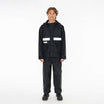
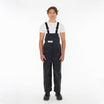
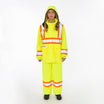
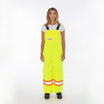
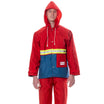
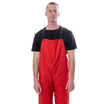
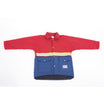
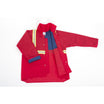
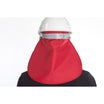

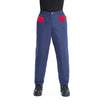
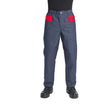
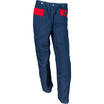
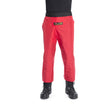
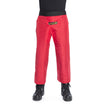
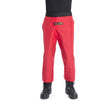
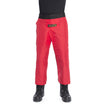
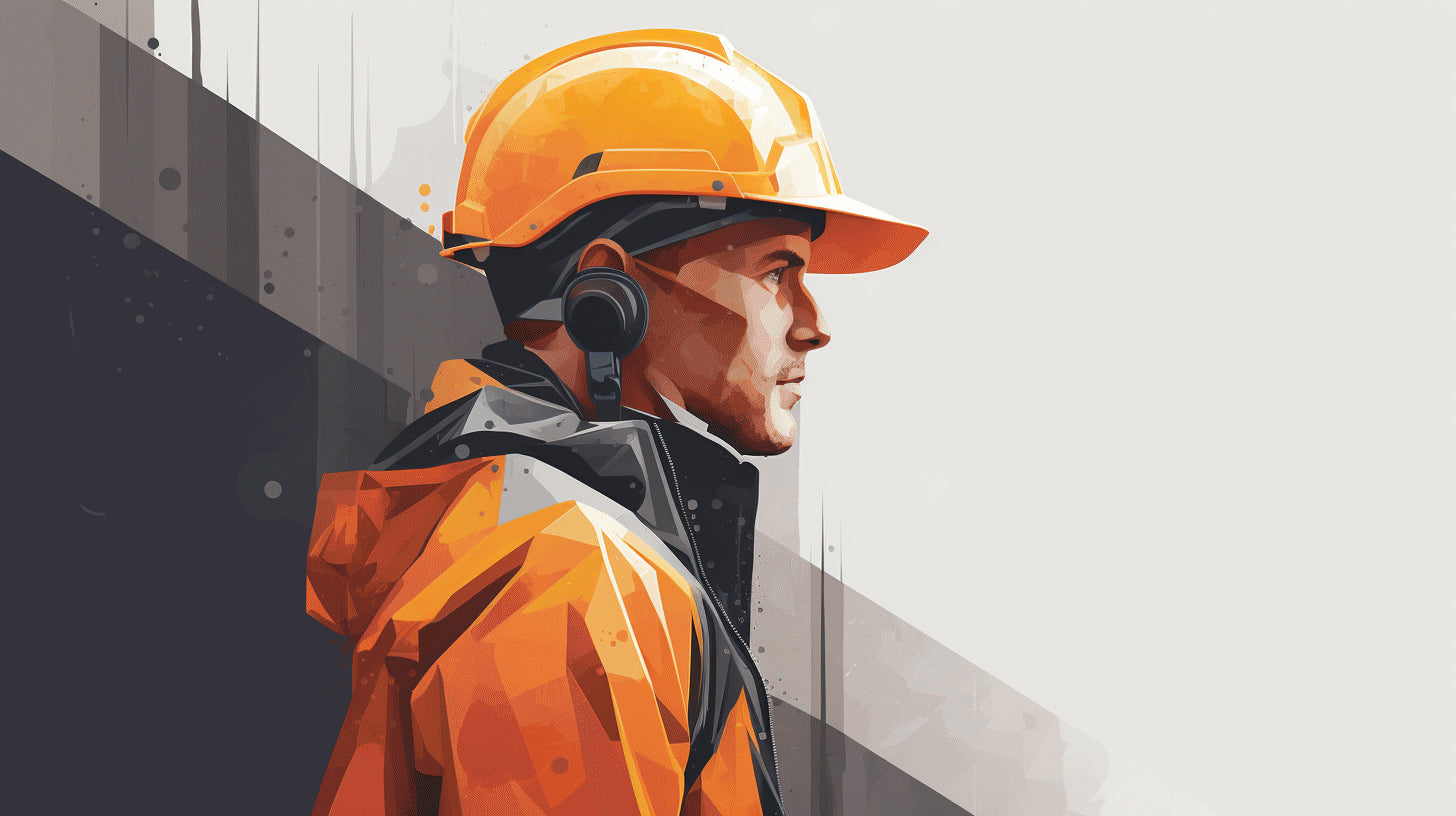

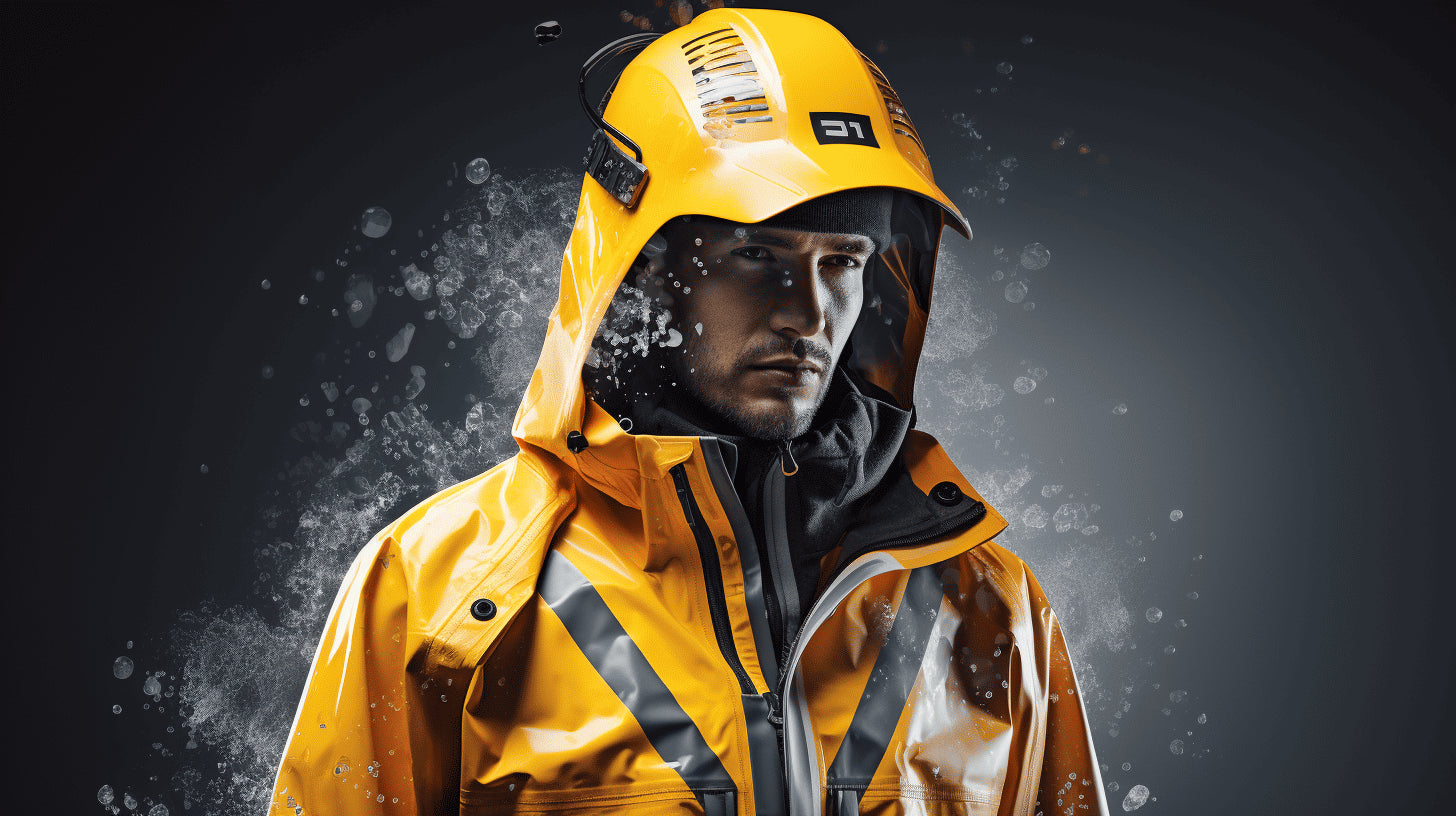
Leave a comment
This site is protected by hCaptcha and the hCaptcha Privacy Policy and Terms of Service apply.